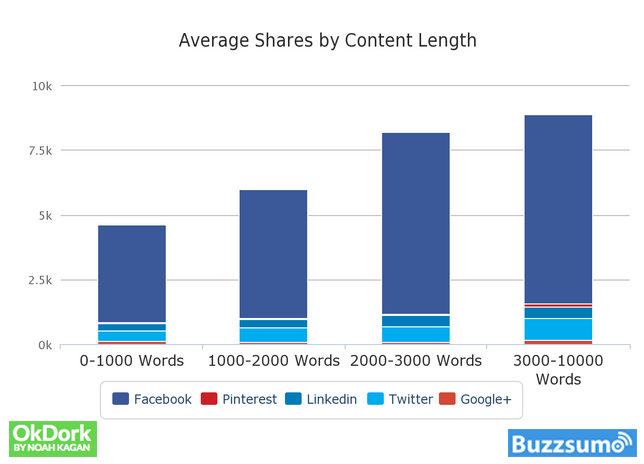You know the saying, “You get what you pay for”? In the content creation world, this is absolutely true. Poor quality content may not cost much upfront, but it winds up being more costly in the long run. Both search engines and readers are looking for content that provides them with some kind of valuable information. Poor quality content fails to provide the value users are looking for.
Let’s take a look at an example of poor quality content:
The paragraph above is grammatically correct and there are no spelling errors, but it lacks substance. Substance aside, the paragraph lacks direction. What are you trying to say here? Essentially, the sentences are a series of separate ideas strung together to fill space on a page.
A paragraph in a high quality article may resemble something like this:
We have certainly seen worse examples of poor quality content, but just because a piece of content is grammatically correct and free of spelling errors, it does not automatically qualify as “high quality.” High quality content will keep your readers engaged, answer their questions or teach them something new. Ultimately, this is what readers and search engines value most.
Poor Quality Content Offers Little Value
Poor quality content offers little to no benefit to the reader. The topic of the article or post may not even be relevant to your particular niche. It’s great to post new content to your website, but that content needs to tell your visitors something new and interesting. With poor quality content, you’re likely just presenting your audience with words on a screen.
For many years, businesses focused on churning out content for the sole purpose of improving their rankings. The focus was on keyword density and ensuring the post was written in an SEO-friendly way. There’s only one problem with this: What happens when the searcher lands on your page? Sure, you may have all of the right keywords in your post, but how are you going to convince the searcher to make a purchase? Achieving high rankings does not automatically equate to higher conversions. If your page offers nothing valuable to the visitor, they will simply click off of your website and move onto another.
High quality content, on the other hand, is highly researched and tailored to your target audience. Writers that produce this type of content will take the time to get to know your industry, who your customers are and what their likes/dislikes are. With this information on hand, posts can be written in a language that speaks to your potential customers and draws interest to your products or services. Because visitors find the content useful, they share it with their friends and your website will generate natural links. Great content and SEO go hand-in-hand, and both sides of the equation deserve the same amount of attention.
High quality content also helps to establish you as a leader in your niche or industry. If you’re answering your target market’s questions and providing them with useful information, you earn their trust. It becomes clear that you know what you’re talking about and you have experience. This means something to your audience. If your blog posts are poorly written, you cannot expect potential customers to take you seriously.
High Quality Content is Engaging, Valuable and Shareable
In a world where some writers charge less than $5 for an article, it can become quite easy to get lost in the world of content. In fact, high quality content is often pushed to the side because there are just too many cheap options available.
What is high quality content? This is a question that clients often ask and it is quite baffling to a writer. High quality content is:
- Engaging and interesting
- Easily shared and enticing
- Research intensive and highly accurate
The poor quality content that is plaguing the Internet is more about the quick profits that can be made than the longevity of a business. There was a time when website owners were rewarded with ad revenue and higher traffic because of the massive amount of articles that they could churn out. This gave a rise to foreign writers that do not have a good grasp on the English language becoming the cornerstone of the Internet.
Google has done their fair share to remove this low quality content, but it is up to every business to produce content that is valuable.
OkDork.com recently released their findings on which content was most shared. These findings correlate to the high quality content mantra.
As you can see, high quality content with a word count of over 2000 is ideal. This is the content that people want to share. Not only is high quality content thorough, but it holds the reader’s attention and provides a major boost in SEO value.
There needs to be immense value in each and every piece of content provided. The looming issue is that some topics do not warrant longer articles. The goal is to create an engaging piece of content that is not redundant and actually speaks to the reader. Can low quality content compare? No.
From a professional standpoint, I have been on the lower and higher price point for articles. When a client can only pay pennies for an article, the article can only dictate a certain amount of time. Writers need to earn a livable, comfortable wage. For high quality content, the justification must be the cost. High quality content may be more costly, but it will allow a writer to:
- Conduct the needed research to engage readers and keep their attention
- Writers will be able to edit and revise their content as well as outline it
- Writers can spend more time on a higher paying piece to ensure that it is perfect
When high quality content is produced, it has a rhyme and a rhythm. The writer is able to take their time and do the necessary research that leads to exposure, social shares and natural link garnering.
Low quality content must be profitable to the writer, so immense research and editing are simply implausible. This leads to rehashed content that is either meant only for search engine rankings or for filler content that provides little value to the reader.
When a visitor lands on your website, do you want them to be interested in your content, share your content with their friends and sign up to your newsletter, or would you rather them close the browser and go to a competitor because the content provided did not meet their expectations?
Quality Content is In-Depth
With the introduction of Google’s in-depth article feature, it should come as no surprise that longer content holds an immense amount of value. Low quality content often neglects to bring out any form of substance. An article about teaching jobs can be written in either a low quality or high quality format.
The difference between the two will be the following:
Low Quality
The article length will be brief. In fact, the very minimum amount of information will be included. This may be a lack of statistics, salary information, educational requirements and a variety of other pertinent information that makes a high quality piece shared, viral and useful.
There are two issues with low quality content:
- Content is forced to be too long that it cannot contain any form of substance and turns into a rambling of words
- Content that is low quality is merely a regurgitation of what has been said a thousand times before
Anyone can go to the BLS website and merely rewrite the content into a low quality, regurgitated piece that provides little to no value.
High Quality
High quality content will use numerous sources to gather information, statistics and facts about the teaching industry. Instead of merely reformatting a post and writing it into your own words, high quality content will be outlined, revised and compiled to make a complete overview of the teaching industry.
Facts and figures will be provided that will tell potential teachers information they may need to know before pursuing a career in teaching. This will be:
- Educational requirements
- Salary figures
- Certifications and specialties
High quality content will delve deeply into these areas and explain required coursework a potential teacher will face while in school, what an entry-level salary will be, what yearly growth a person can expect and a variety of other factors that leave the person well informed about the teaching industry.
As a business, do you want your readers to be left with more questions than you answered? Satisfaction comes from educating the reader and this can only be done when the appropriate amount of time is granted for a high quality piece to be written.
There are times when an article will be short in length; if an article doesn’t warrant 2,000 words, do not force the word count. Instead, the article should be thorough, informative and answer all of a reader’s questions.
From a Google standpoint, in-depth articles are much more valuable. These articles contain naturally flowing keywords, statistics and leave readers with a fundamental understanding of the subject after reading. With the in-depth search introduced to the US market in August of 2013 and recently to the UK market in April of 2014, it seems as if Google is keeping a close eye on the articles that leave no questions unanswered.
When you are searching for information, do you want to read a small snippet that is an overview of your questions or would you rather read a 2,000 word piece that is filled with information, facts and statistics?
Does the word count of a high quality article have to reach or exceed the 2,000 work mark? No. However, if the article can be written in a well formatted easy-to-read manner that is educational and provides answers to a viewer’s questions, longer content should be utilized.
Time is Money
How much is high quality content worth? This depends on who you ask. There tends to be two groups of people: Those who values content creators and those who don’t. When you get down to the heart of it, high quality content is not cheap. It takes time to develop an article or a blog post that grabs the reader’s attention and answers their questions.
If a post requires an hour of research and another two hours to write and edit, that writer should expect to be paid a decent wage. Yet, it’s not uncommon to find job listings on freelance websites that look a little something like this:
Paying $1 per 500 Words. All articles must be free of spelling and grammatical errors. All articles must be unique and pass Copyscape.
Unfortunately, many of the listings like the one above are for businesses looking to create blog posts for their website. It’s impossible to produce unique, high quality content at the rate listed above.
In order to make a livable wage, you would have to write at least one post every 5 minutes. If a freelancer does take the job, there’s a good chance that their content will do more harm than good to the website’s reputation and rankings. Zero research can go into these types of articles, which means you wind up with 500 words of fluff.
At the end of the day, businesses need to sit down and think about the future of their online success. High quality content cannot be produced on a shoestring budget. Are you willing to sacrifice your success because you rather pay a writer an unlivable wage that certainly does not pay their bills?
High quality content is shared more often, lures in natural links and becomes a place where readers will leave their thoughts and opinions. The best part about high quality content is that it continually pays for itself. When an engaging piece is written, it will attract readers and potential clients/customers indefinitely.
Higher quality content is a smart investment that will pay for itself time and time again. Low quality content simply cannot offer the same level of profitability.
- These 7 Tips Can Force You to Create Content That Converts - November 19, 2014
- Why Poor Quality Content is Hurting Your Business - April 29, 2014




Hi Mike,
Spot on points! Good content attracts good business. Work on your skills or hire out to grow your venture.